Embark on an unforgettable journey through Bhutan's awe-inspiring landscapes with its best day hikes. Experience the spiritual majesty of the Tiger's Nest Monastery hike, or explore the lush valleys with Punakha day hikes and the high-altitude trails of Chele La Pass. Whether you're traversing the serene Gangtey Nature Trail or uncovering the hidden gems on short hikes in Paro, Bhutan's day treks offer a blend of breathtaking scenic hikes and enriching cultural hikes. These trails are perfect for anyone looking to connect with nature and experience the profound tranquility and beauty of the Himalayas.
At Amen Bhutan Tours and Treks, we pride ourselves on being the premier provider of the best day hikes in Bhutan. Our expertly guided tours take you through the most scenic and culturally rich trails in the country, from the awe-inspiring heights of the Tiger's Nest Monastery to the verdant pathways of the Phajoding Monastery hike and the panoramic splendors of the Chele La Pass hike. With our deep local knowledge and commitment to exceptional service, we ensure every hiker experiences the natural beauty and spiritual depth of Bhutan in the most immersive and enjoyable way possible. Join us to discover why Amen Bhutan Tours and Treks is renowned for offering the finest day treks in Bhutan.
Tiger's Nest Monastery Hike (Paro Taktsang)
The Tiger's Nest Monastery Hike (Paro Taktsang) stands out as one of the most revered and breathtaking day hikes in Bhutan. This trail leads adventurers up to the stunning Paro Taktsang, a sacred monastery that clings dramatically to a cliff 900 meters above the Paro Valley. The monastery itself is a significant cultural and religious site, believed to be the place where Guru Rinpoche (Padmasambhava) flew on the back of a tigress to meditate, laying the foundations for Buddhism in Bhutan.

Highlights of the Tiger's Nest Monastery Hike:
- Scenic Views: The hike provides panoramic views of the lush forests and emerald valleys that typify Bhutan’s landscape.
- Spiritual Significance: As a pinnacle of Bhutanese spirituality, the site offers a profound sense of peace and introspection.
- Architectural Marvel: The monastery's architecture, with its temples and dwellings seamlessly perched on the cliffside, is a sight to behold.
Hike Details:
- Starting Point: Base camp near Paro
- Duration: Approximately 5-6 hours round trip, depending on pace and rest stops.
- Difficulty: Moderate, with steep and sometimes uneven paths. Suitable for most travelers with reasonable fitness.
- Best Time to Visit: Early morning start is advisable to avoid the midday sun and to experience the tranquil early morning atmosphere at the monastery.
The journey to the Tiger's Nest is both a physical and spiritual pilgrimage, offering each visitor personal insights and a deeper connection with Bhutan's cultural heritage. It is a must-do for anyone visiting Bhutan, promising an unforgettable adventure through one of the most mystical and visually stunning places on earth.
Khamsum Yulley Namgyal Chorten Hike
The Khamsum Yulley Namgyal Chorten Hike is a delightful and relatively easy trek that takes you through the lush landscapes of Punakha Valley, leading to the stunningly picturesque Khamsum Yulley Namgyal Chorten. This stupa was built to promote peace and stability in the world, beautifully reflecting the spiritual depth and artistic heritage of Bhutan.
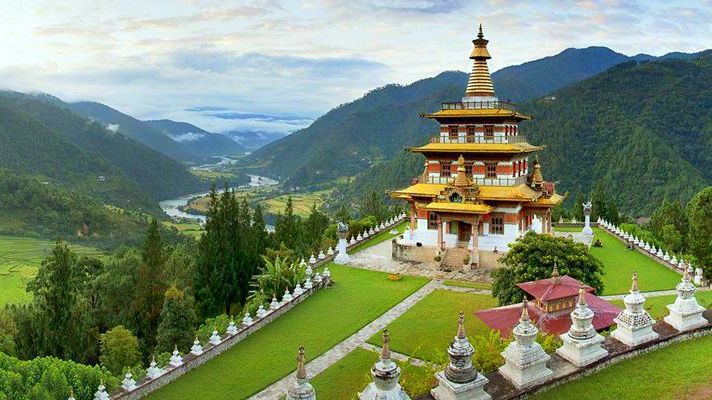
Highlights of the Khamsum Yulley Namgyal Chorten Hike:
- Scenic Beauty: The trail meanders through fertile rice fields and ascends to a ridge, offering expansive views of the Punakha Valley below.
- Architectural Splendor: The chorten itself is a fine example of Bhutanese architecture, adorned with elaborate paintings and carvings that represent the teachings of the Buddhist philosophy.
- Cultural Insight: This monument was constructed under the patronage of the Queen Mother and is a great testament to Bhutanese traditions and beliefs.
Hike Details:
- Starting Point: Northern end of the Punakha Valley
- Duration: Approximately 2 hours round trip, which makes it an ideal morning or afternoon hike.
- Difficulty: Easy to moderate, with some steep sections. The path is well-maintained, making it accessible for hikers of all skill levels.
- Best Time to Visit: The hike can be enjoyed year-round, but the best times are from March to May and from September to November, when the weather is clear and the valley is either lush green or rich with the golden hues of ripe rice.
This hike not only offers physical refreshment and stunning views but also provides a peaceful retreat into the spiritual heart of Bhutan. It's perfect for those looking to experience a blend of natural beauty and cultural richness within just a few hours.
Cheri Monastery Hike
The Cheri Monastery Hike near Thimphu offers a serene and contemplative journey through a beautiful forested landscape to one of Bhutan’s most important monastic schools. Established in 1620 by Zhabdrung Ngawang Namgyal, the founder of Bhutan, Cheri Monastery holds significant historical and spiritual importance as the site where the first monastic body in Bhutan was formed.
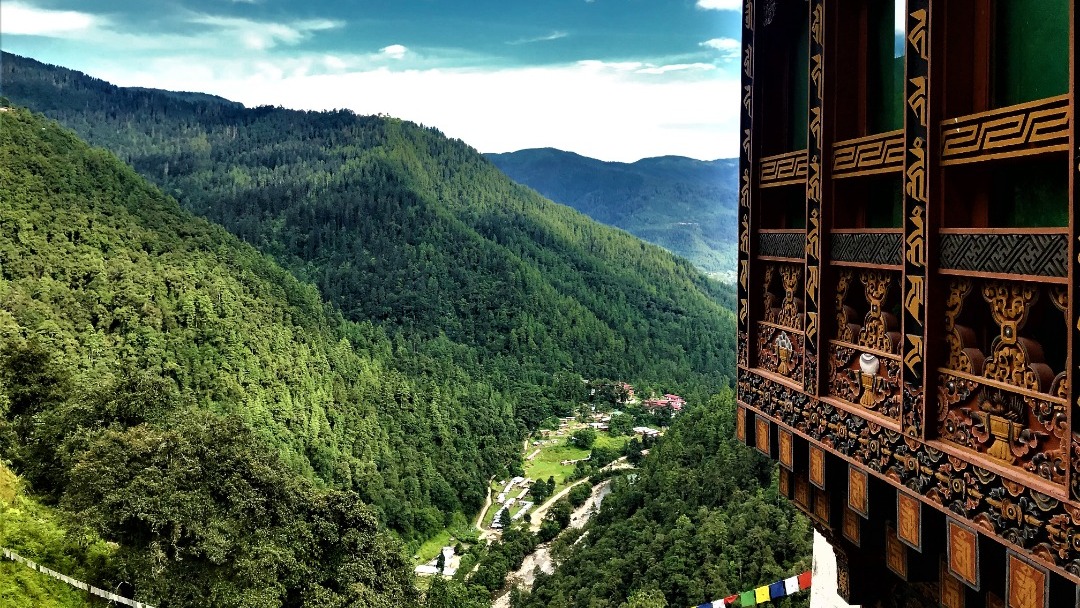
Highlights of the Cheri Monastery Hike:
- Natural Scenery: The trail to Cheri Monastery winds through a dense forest filled with blue pines, rhododendrons, and oaks, accompanied by the soothing sounds of the Thimphu Chu (river) flowing alongside.
- Spiritual Significance: As a key religious site, the monastery serves as a retreat for monks who engage in extended periods of meditation, offering hikers a glimpse into the devout practices of Bhutanese Buddhism.
- Wildlife Encounters: The area around the monastery is also a protected wildlife reserve, home to diverse fauna such as gorals (a type of wild goat), deer, and numerous bird species, making it a fantastic spot for nature enthusiasts.
Hike Details:
- Starting Point: North of Thimphu, about a 30-minute drive from the city center to the starting point of the hike.
- Duration: Approximately 3-4 hours round trip, depending on how long you spend at the monastery.
- Difficulty: Moderate, with some steep inclines. The path is well-trodden and suitable for most hikers with a reasonable level of fitness.
- Best Time to Visit: Spring (March to May) and autumn (September to November) are ideal, offering mild weather and clear skies that enhance the experience and views.
Visitors to Cheri Monastery can immerse themselves in the tranquility of the surroundings and the spiritual ambiance of the monastery. This hike not only provides a wonderful opportunity to explore the natural beauty surrounding Thimphu but also offers a profound insight into the spiritual heritage of Bhutan.
Phajoding Monastery Hike
The Phajoding Monastery Hike is a captivating trek that leads to a serene monastic complex perched high above the Thimphu Valley. Recognized as one of Bhutan's most sacred meditation sites, Phajoding Monastery offers both spiritual solace and stunning natural vistas, making it a must-visit for those trekking in the region.
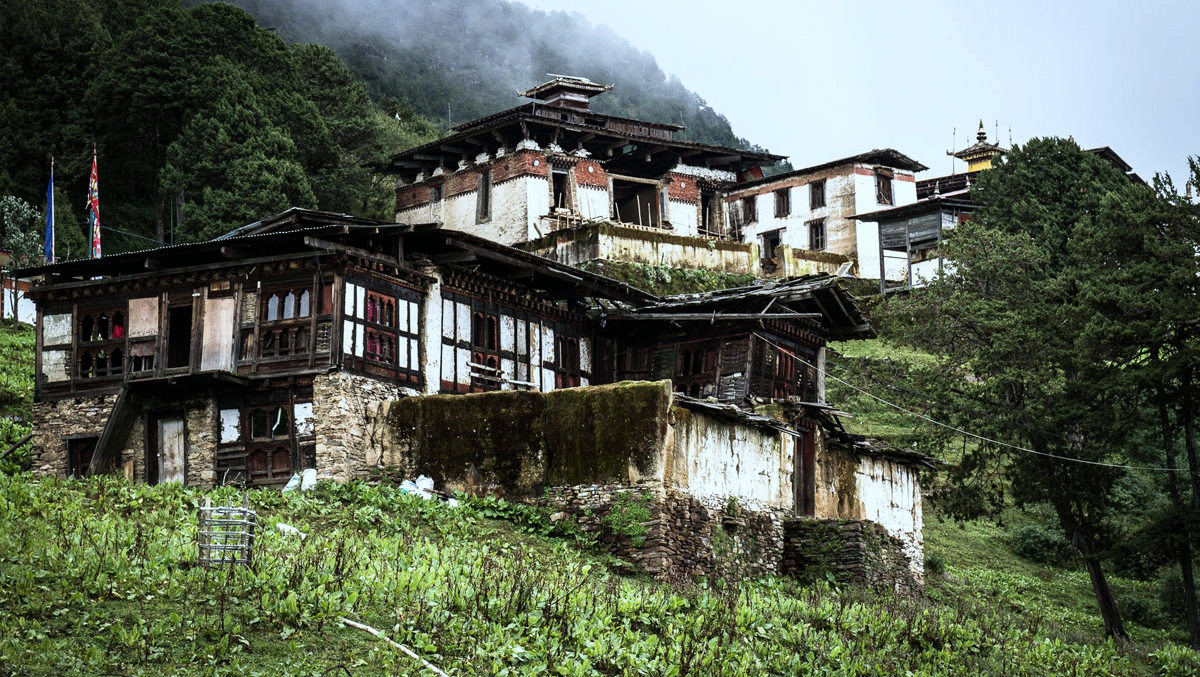
Highlights of the Phajoding Monastery Hike:
- Panoramic Views: The trail ascends through a mixed forest of blue pines, spruces, and rhododendrons, eventually opening up to spectacular views of Thimphu valley and the Himalayan ranges.
- Spiritual Heritage: Phajoding is considered a grade one cultural heritage site in Bhutan due to its historical importance and its role in the spiritual life of Bhutanese Buddhism.
- Monastic Life: The monastery is a residence for monks who practice and study within its tranquil confines, offering visitors a glimpse into their dedicated spiritual practices.
Hike Details:
- Starting Point: A short drive from Thimphu takes you to the starting point of the trail.
- Duration: Approximately 5-7 hours round trip, making it an ideal day hike for those based in Thimphu.
- Difficulty: Moderate; the trail is well-maintained but can be steep in parts, making it a good challenge for hikers of average fitness levels.
- Best Time to Visit: The hike is most enjoyable in the spring (March to May) when the flowers are in bloom and in autumn (September to November) when the skies are clear and the views are unobstructed.
The Phajoding Monastery hike not only challenges the body but also provides a nourishing experience for the soul, offering peace and reflection amidst the natural beauty and calm of the high Himalayas. It’s an enriching journey that combines physical activity with cultural immersion and spiritual introspection.
Gangtey Nature Trail
The Gangtey Nature Trail offers a uniquely gentle yet immersive trekking experience in the picturesque Phobjikha Valley, known for its vast U-shaped glacial valley and as a winter home for the endangered black-necked cranes. This easy and enjoyable hike is perfect for nature lovers and those interested in bird watching.
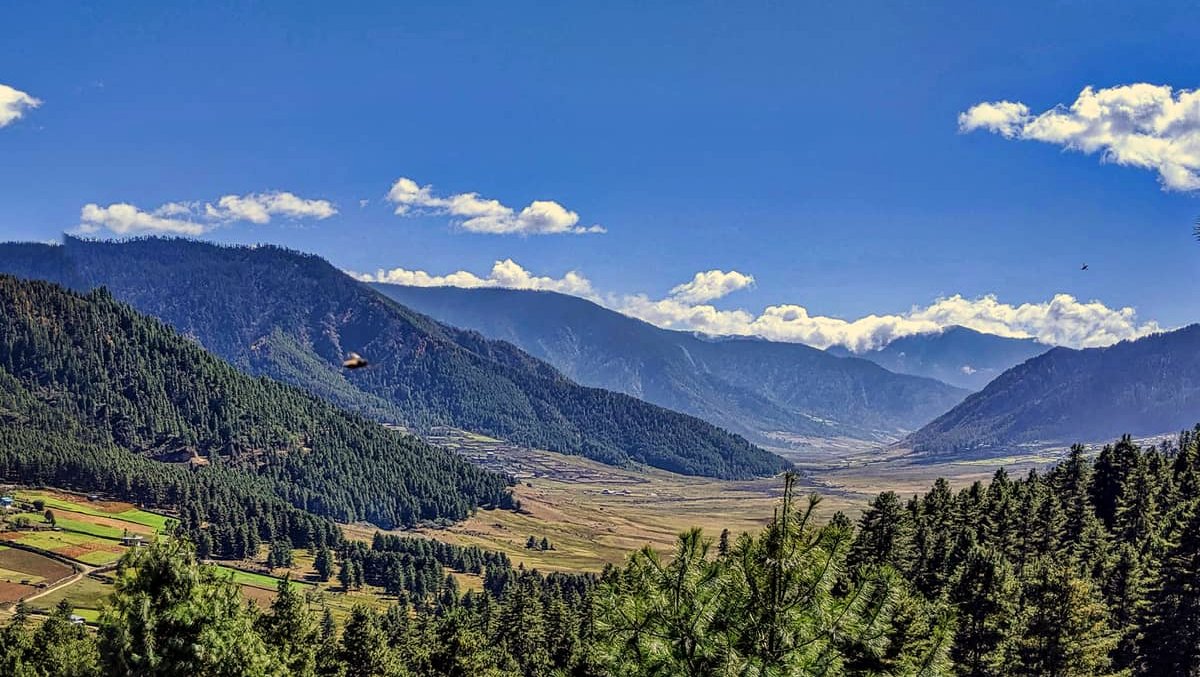
Highlights of the Gangtey Nature Trail:
- Wildlife and Flora: The trail winds through meadows and forests, past streams and an old chorten, providing opportunities to observe the rich biodiversity, including the famed black-necked cranes during their winter migration.
- Scenic Landscapes: The Phobjikha Valley is renowned for its beautiful natural scenery, with rolling hills and wide-open spaces that are a treat for the eyes.
- Cultural Insight: The trail also offers a glimpse into rural Bhutanese life, passing through small villages and by the Gangtey Monastery, adding a spiritual and cultural dimension to the hike.
Hike Details:
- Starting Point: Near Gangtey Monastery in the Phobjikha Valley.
- Duration: About 2-3 hours, making it an excellent choice for a leisurely morning or afternoon walk.
- Difficulty: Easy; this trail is well-marked and mostly flat, suitable for hikers of all ages and skill levels.
- Best Time to Visit: The best time to hike the Gangtey Nature Trail is from late October to mid-February when the black-necked cranes are present in the valley. However, the valley remains a stunning visit any time from spring to early fall.
The Gangtey Nature Trail is an ideal excursion for those who wish to experience the tranquility of Bhutan's natural landscapes without the strenuous effort required by the more rugged hikes in the region. It perfectly combines ecological, cultural, and scenic attractions, providing a comprehensive and enjoyable Bhutanese outdoor experience.
Chele La Pass Hike
The Chele La Pass Hike is one of the highest motorable roads in Bhutan and offers an invigorating trek that provides stunning panoramic views of the surrounding majestic mountains and valleys. Situated between the towns of Paro and Haa, this hike is an excellent opportunity for those looking to experience high altitude trekking in Bhutan.
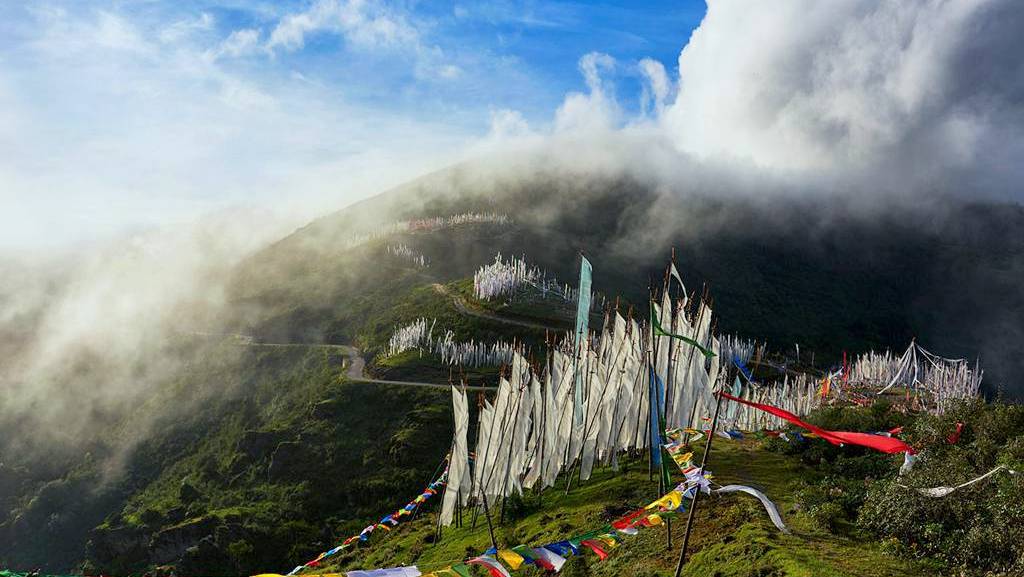
Highlights of the Chele La Pass Hike:
- Breathtaking Views: From the summit of Chele La Pass, hikers can enjoy awe-inspiring vistas of sacred mountains such as Mt. Jomolhari and Jichu Drake. On clear days, the view extends across the border into Tibet.
- Flora and Fauna: The area is known for its rich biodiversity, including dense spruce and larch forests. Spring and summer bring blooming rhododendrons and other wildflowers, making the landscape vibrant and colorful.
- Cultural Elements: Prayer flags fluttering in the wind add a profound spiritual dimension to the hike, and the occasional sighting of traditional yak herder camps offers a glimpse into the nomadic lifestyles still prevalent in this region.
Hike Details:
- Starting Point: The hike usually begins from the road leading up to Chele La Pass, accessible by car from Paro.
- Duration: About 3-4 hours round trip, depending on the chosen trail and walking pace.
- Difficulty: Moderate; the hike involves ascending through high altitude terrain, which can be challenging for those not accustomed to the thinner air.
- Best Time to Visit: The best times for the Chele La Pass hike are during spring (April to June) and autumn (September to November) when the skies are clear, and the weather is favorable for hiking.
The Chele La Pass hike is a rewarding experience for those seeking the thrill of high-altitude hiking without committing to a multi-day trek. It offers a perfect blend of natural beauty, cultural insights, and physical activity, ideal for a day trip from Paro or Haa.
Best Time for the best day Hikes in Bhutan
The best time for day hikes in Bhutan largely depends on weather conditions, as the country experiences distinct seasons, each offering unique experiences:
- Spring (March to May): Spring is one of the most popular times for hiking in Bhutan due to the mild weather and the blossoming of flowers across the valleys. The landscape becomes vibrant with color, and the skies are generally clear, providing excellent conditions for trekking and photography.
- Autumn (September to November): Autumn is another ideal period for hiking in Bhutan. During these months, the weather is stable with minimal rainfall, offering clear blue skies and spectacular views of the Himalayas. This is also the time when the air is crisp, and the scenery includes golden and amber hues as the leaves change.
- Summer (June to August): Summer in Bhutan can be wet due to the monsoon, making trails slippery and visibility low due to clouds and fog. However, early summer, before the heavy rains start, can still be a good time for hikes at higher elevations where temperatures are cooler and the landscape is lush.
- Winter (December to February): Winter sees colder temperatures, especially at higher altitudes, but it is still possible to enjoy day hikes, particularly in the lower regions like Punakha. The skies are usually clear, allowing for great views of the snow-capped mountains, though it's essential to be prepared for colder conditions.
Overall, spring and autumn are the most recommended seasons for the best day hikes in Bhutan due to their favorable weather conditions, scenic beauty, and comfortable temperatures for outdoor activities.
Essential Tips for The best day Hikes in Bhutan
When planning for the best day hikes in Bhutan, it's crucial to be well-prepared to ensure a safe and enjoyable experience. Here are some essential tips to consider:
- Acclimatize Properly: Bhutan's elevation can pose a challenge due to the thin air at high altitudes. Spend a few days acclimatizing in the local area before embarking on strenuous hikes, especially if coming from sea level.
- Hire a Local Guide: Local guides are invaluable for navigating trails, understanding local customs, and learning about the natural environment and history. They can also enhance safety by providing expertise in mountain terrain.
- Check Weather Conditions: Weather in the mountains can be unpredictable. Always check the local weather forecast before heading out and be prepared for sudden changes by carrying suitable gear.
- Dress Appropriately: Wear layered clothing to adapt easily to varying temperatures. Ensure you have a waterproof jacket, sturdy hiking boots, and a sun hat. Dressing in layers allows you to adjust to the changing environment as you hike.
- Pack Essentials: Bring a backpack with water, snacks, a basic first-aid kit, sunscreen, a map or GPS device, and a fully charged phone. Also, include a flashlight or headlamp and extra batteries.
- Stay Hydrated: Dehydration is a risk at higher altitudes. Carry enough water and drink regularly throughout your hike. Avoid excessive consumption of alcohol and caffeine before and during the hike.
- Respect Cultural Sites: Many trails in Bhutan pass through sacred and cultural sites. Show respect by dressing modestly, speaking softly, and following any specific local guidelines or restrictions.
- Leave No Trace: Preserve the pristine nature of Bhutan by carrying out all your trash, staying on marked trails to avoid damaging the flora, and being mindful of wildlife and their habitats.
- Obtain Necessary Permits: Some areas in Bhutan require permits to access them, often handled by tour operators. Ensure all your documentation is in order before setting out.
- Be Prepared for Emergencies: Know basic first aid and carry a small first-aid kit. Be aware of the symptoms of altitude sickness and the locations of the nearest medical facilities.
Following these tips can help ensure that your hiking experience in Bhutan is memorable for all the right reasons, providing a safe and deeply enriching outdoor adventure.
Bhutan's best day hikes offer a spectacular tapestry of natural beauty, spiritual sanctuaries, and vibrant cultural expressions, making each trail a unique adventure. From the iconic Tiger's Nest Monastery that combines physical challenge with spiritual enlightenment, to the serene Gangtey Nature Trail ideal for wildlife enthusiasts, Bhutan caters to trekkers of all preferences and fitness levels. Whether ascending through the verdant forests to Cheri Monastery or capturing panoramic views from Chele La Pass, these hikes provide unforgettable experiences that highlight the harmony between Bhutan's landscape and its cultural heritage. Perfect for those seeking to immerse in nature's tranquility or explore ancient traditions, Bhutan's trails await to unfold their timeless stories and breathtaking vistas.
FAQs of the Best Day Hikes in Bhutan
Q: What is the best time of year to go hiking in Bhutan?
A: The best times to hike in Bhutan are during the spring (March to May) and autumn (September to November) when the weather is clear and dry, making the trails more accessible and the views spectacular.
Q: Do I need a guide to hike in Bhutan?
A: While not all trails require a guide, it is highly recommended to hire one for navigating the paths, learning about the local flora, fauna, and culture, and ensuring safety, especially in remote areas.
Q: How difficult are the day hikes in Bhutan?
A: The difficulty level varies depending on the hike. The Tiger's Nest Monastery hike is considered moderate, while the Gangtey Nature Trail is easy and suitable for all ages. It's important to assess your fitness level and choose a hike that matches your ability.
Q: What should I bring on a day hike in Bhutan?
A: Essentials include sturdy hiking boots, weather-appropriate clothing (layers are recommended), a hat and sunscreen, plenty of water, snacks, and a camera. Also, consider bringing a walking stick for steeper hikes like the Tiger's Nest.
Q: Are there entrance fees for hiking trails in Bhutan?
A: Some of the major hiking destinations, such as the Tiger's Nest Monastery, require an entrance fee, which is usually covered if you're on a tour arranged by a travel company. Other trails may not have fees but check in advance.
Q: Can I encounter wildlife during hikes in Bhutan?
A: Yes, Bhutan's forests are home to various wildlife, including deer, monkeys, and numerous bird species. Always maintain a safe distance and follow guidelines to ensure both your safety and the preservation of wildlife.
Q: How do I prepare for high altitude hiking in Bhutan?
A: If you're planning to hike at high altitudes, such as the Chele La Pass, it's important to acclimatize properly, stay hydrated, and ascend gradually. If you experience symptoms of altitude sickness, descend to a lower altitude and seek medical advice.
Q: Is it safe to hike in Bhutan?
A: Bhutan is generally safe for hiking. However, it's advisable to always hike with a companion or guide, stay on marked trails, and inform someone of your travel plans. Also, check local weather conditions before setting out.
Q: Are there family-friendly hikes in Bhutan?
A: Yes, there are several family-friendly hikes, such as the Gangtey Nature Trail and some shorter hikes around Paro and Thimphu, which are less strenuous and offer activities and sights that children can enjoy.
Q: How can I respect the environment while hiking in Bhutan?
A: Practice "Leave No Trace" principles by carrying out all your trash, staying on trails to prevent erosion, avoiding disturbing wildlife, and respecting cultural sites and practices.
If you are looking for tour packages in Bhutan please click here
If you need any further information, please contact us, Email: at [email protected] , Phone (Whatsapp or Viber) +975-1755-6636
